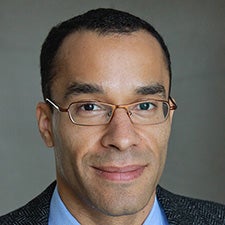Inequality in Education: The Latest Wake-Up Call
UCLA Law Magazine | Fall 2020 | Volume 43
 JONATHAN GLATER is a professor of law and core member of the CRS faculty whose scholarship focuses on how the law both enables and acts as a barrier to access to higher education. He teaches disability law and education law and policy, and his research includes innovative explorations into the effects of education debt. He joined the UCLA Law faculty in 2020, and his latest article, “The Civil Rights Case for Student Debt Reform,” with co-author Dalié Jiménez, appears in the Harvard Civil Rights-Civil Liberties Law Review.
JONATHAN GLATER is a professor of law and core member of the CRS faculty whose scholarship focuses on how the law both enables and acts as a barrier to access to higher education. He teaches disability law and education law and policy, and his research includes innovative explorations into the effects of education debt. He joined the UCLA Law faculty in 2020, and his latest article, “The Civil Rights Case for Student Debt Reform,” with co-author Dalié Jiménez, appears in the Harvard Civil Rights-Civil Liberties Law Review.
Like a never-ending lightning strike, the pandemic has illuminated gaping inequalities across our education landscape. When schools, colleges and universities closed, students suddenly and unexpectedly found themselves at home or scrambling to find other living arrangements, even as many struggled to participate in education remotely. Too many K-12 students were unable to do so.
Students and, often, their families have vastly different abilities to manage this crisis, and these abilities vary consistently and predictably along longstanding lines of race and class. Poorer students and their families have fewer resources to fall back on; students of color, especially Black and Latino students, disproportionately have less in the way of financial resources. Instead of helping to make up for unequal opportunities by putting students of different backgrounds in the same classroom, schooling in the pandemic may allow disparities to linger or worsen.
Consider all the challenges COVID-19 and our response to it have created. There are unexpected costs of living, first, and the challenges of packing more people than anticipated into a particular living space: For students and families with less financial means, these costs are more difficult to bear, and close cohabitation increases the risk of contagion if anyone gets sick. Working parents who cannot work remotely face an epic childcare challenge if they relied on operating schools – and who of these parents did not?
There are the tangible costs of remote education, including the need for a working device like a computer, tablet or even a phone, as well as reliable Internet access. There are the intangible costs, including finding space and time to participate in classes – potentially across time zones – and to study, as well as the impact on cohabitants and on social ties with classmates. Students with disabilities lose the accommodations provided to them when education was in-person. Once again, bearing all these costs is easier, the more money is available.
And it doesn’t end even at college graduation. Student loans hang over those who had to borrow, who are of course those who began their higher education odysseys with less money, and paying off those loans requires employment, which is harder to find in the pandemic economy.
For a concerned law student, lawyer, law professor, parent or simply a concerned member of our national community, this crisis forces on us hard questions about how to combat inequality and how law can be used promote fairness. Funding of public education at every level is clearly implicated, and so are student support services, like counseling; financial aid and pricing tactics of colleges and universities have assumed even – even! – greater urgency. My pre-pandemic research helped identify ways debt has undermined equity in higher education opportunity; every negative effect is greater now, and the case for reform is far stronger.
Schools, colleges and universities have vastly different capacities to try to make up for disparities in the communities that they serve; their financial resources also vary widely and their budgets are under extreme pressure, too. Even when K-12 schools have been able to set up remote instruction, they cannot ensure that all students participate, and once again, poorer students, Black students and Latino students disproportionately do not join.
In the absence of enlightened and egalitarian policy responses to these forms of inequality, the effects of the pandemic’s perfect storm threaten to linger for years, leaving poorer students and students of color behind their onetime classmates who enjoy more privilege and access to higher-quality remote instruction or, for students in the wealthiest and highest income families, privately financed group tutoring in “pods.”
Our situation calls for bold rethinking of the obligations of schools to students: What should schools do to level the field for students of wildly different backgrounds and vastly differing financial means? It calls for rethinking the obligations of our communities to our schools: What must we all do to ensure that our schools have the resources to support our increasingly diverse students? And most of all, we must think about the obligations we all owe each other: How much of an investment are we prepared to make to improve quality and promote equity for all students?